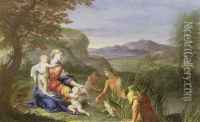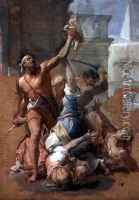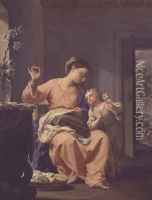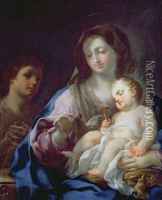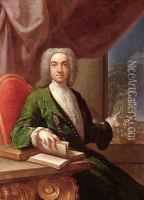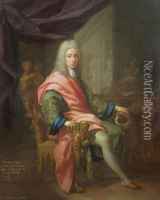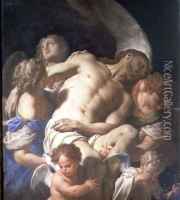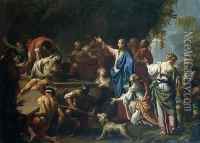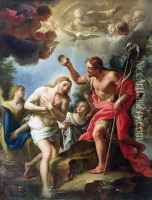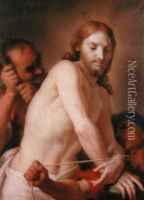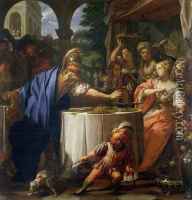Francesco Trevisani Paintings
Francesco Trevisani was an Italian painter of the late Baroque period, known for his significant contribution to Roman painting. Born in Capodistria, now Koper in Slovenia, then part of the Republic of Venice, on April 9, 1656, Trevisani demonstrated an early talent for art. His initial training began with his father, who was a minor painter, before he moved to Venice to study under Antonio Zanchi. Later, he relocated to Rome in 1678, where he became a pupil of the well-established Carlo Maratta, who had a profound impact on Trevisani's stylistic development.
In Rome, Trevisani quickly assimilated the grand manner of high Baroque painting, and his work was appreciated for its clarity, classical restraint, and refined use of color. He became a celebrated painter, receiving commissions from prominent patrons including the papacy and members of the European aristocracy. Trevisani's religious and mythological works, characterized by their graceful composition and vibrant palette, adorned many churches and palazzi. His paintings often featured dramatic narratives, executed with a sense of elegance and emotional subtlety that distinguished him from his contemporaries.
Over the course of his long career, Trevisani also engaged in portraiture, capturing the likenesses of several notable figures of his time. His portraits are valued for their psychological depth and realism. Despite facing competition from other artists in Rome, such as Sebastiano Conca and Giovanni Battista Gaulli, Trevisani maintained a successful career and was held in high esteem by his peers.
Trevisani's influence extended beyond his lifetime, as he played a role in training and mentoring the next generation of painters. He never married and devoted his life to his art. Francesco Trevisani died on July 30, 1746, in Rome, leaving behind a legacy as one of the last great painters of the Roman Baroque era. His works can be found in major museums and collections around the world, continuing to be studied and admired for their beauty and historical significance.
